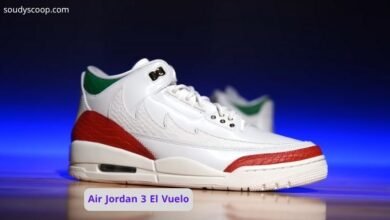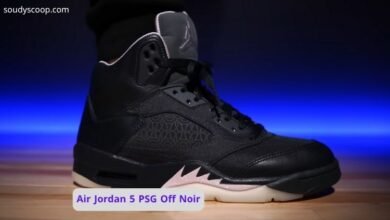Jordan Tatum 4 Performance Review: Traction, Cushion, and Real Court Experience
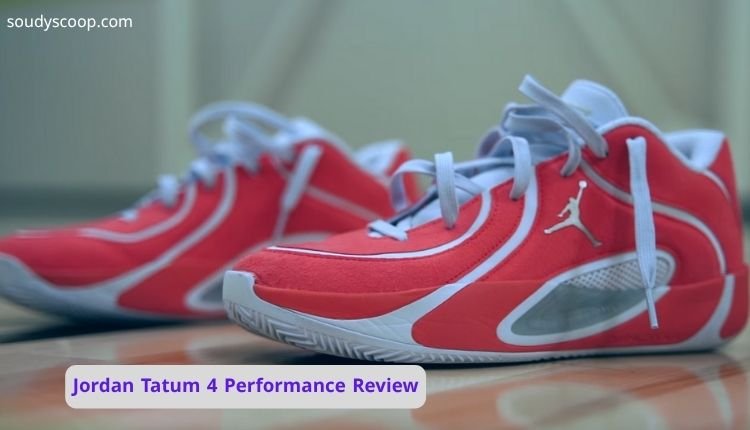
When I first laced up the Jordan Tatum 4, I was excited. A brand-new model tied to one of today’s rising stars always sparks curiosity, especially when it comes to on-court performance. After several sessions in these sneakers, I can confidently share my full experience—the highs, the lows, and everything in between.
Table of Contents
This Jordan Tatum 4 performance review covers traction, cushioning, materials, fit, support, and overall playability. I’ll also touch on where the shoe shines and where it misses the mark, based entirely on how it felt in live basketball runs.
First Impressions
The box felt standard, but when I pulled the shoes out, the outsole immediately grabbed my attention. The traction pattern is aggressive herringbone from heel to toe, with a radial-style center piece that reminded me of older Jordan models. My first thought was, “Okay, these are built for grip.”
The materials, though, were another story. Right out of the box, I noticed they looked and felt cheap compared to what you’d expect from a signature Jordan line. Still, I wanted to test them before making any harsh judgments.
Traction: The Highlight of the Jordan Tatum 4
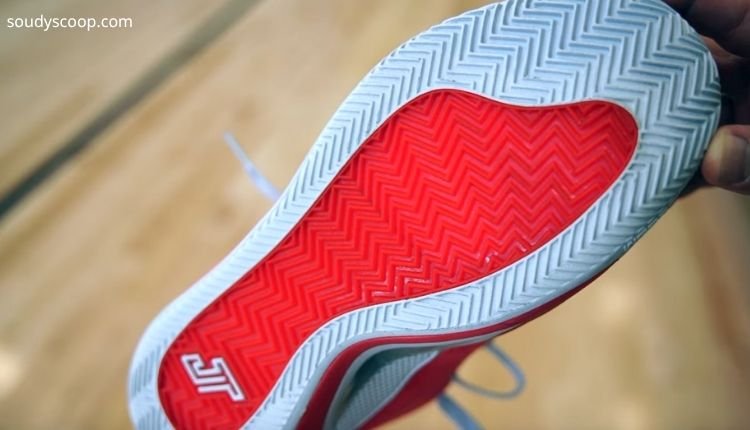
Without a doubt, traction is where the Jordan Tatum 4 shines. Once I got past the initial slick film on the outsole—which burned off after a few games—the grip was outstanding. The herringbone design bit the floor hard, letting me cut, stop, and accelerate with confidence.
On clean indoor courts, the traction was nearly perfect. On slightly dusty floors, a quick wipe kept performance consistent. Outdoors, though, I don’t see these holding up long-term. The rubber feels soft, which means it may burn out quickly on rougher surfaces.
Verdict: If you primarily hoop indoors, traction is a major strength.
Cushioning: Comfort Meets Responsiveness
The midsole uses Kushlon 3.0 foam, and it’s easily the most comfortable cushioning I’ve felt in the Tatum line so far. It’s soft, springy, and responsive underfoot. From the first run, I noticed how smooth the ride felt.
There’s also an unlocked Zoom unit in the forefoot. In theory, this should provide a strong burst of responsiveness. In practice, though, Kushlon is so bouncy that I couldn’t distinctly feel the Zoom unit. The shoe almost felt like it had full-length Zoom, which isn’t a bad thing at all.
The only issue is durability. Because the Zoom unit is unlocked and exposed once the outsole wears down, the shoe may not last long outdoors. Indoors, however, the cushioning setup is close to perfect.
Verdict: In terms of comfort and impact protection, this is the best cushioning in the Tatum series yet.
“Read Also: Nike shoes“
Materials: The Weakest Link
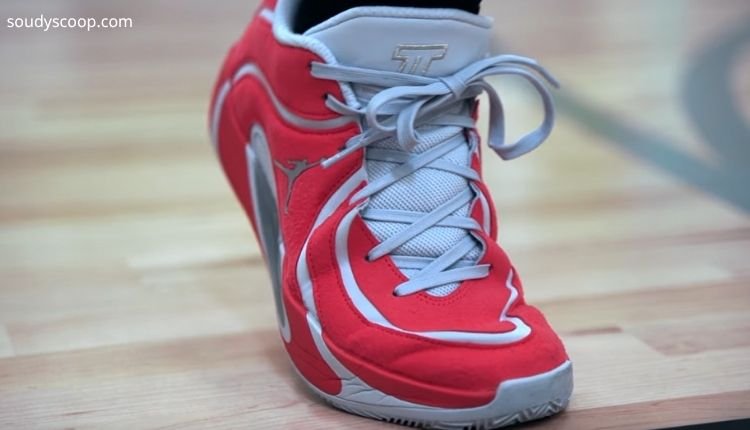
Here’s where things fall apart. The upper is made almost entirely of cheap synthetics, with overlays that feel like thin felt. Instead of premium textiles or suede, the shoe relies on basic, low-quality layers that give it a broken-in feel but cheap construction.
Functionally, the materials get the job done—they’re flexible, lightweight, and supportive enough for basketball play. But when you compare the retail price to the quality of the build, it’s disappointing. For a Jordan signature shoe, expectations are much higher.
Verdict: Materials work for performance, but they feel out of place for a shoe in this price range.
Fit and Sizing
I went true to size, and that was the right call. The fit feels very similar to the Jordan Tatum 3. The lockdown is solid, with no major heel slippage. However, certain flex points along the upper bow away from the foot instead of moving with it. Luckily, the shell structure of the upper keeps things stable enough to avoid serious problems.
Verdict: Go true to size for most players. Narrow-footed hoopers might consider trying half a size down, but overall fit is consistent.
Support and Stability
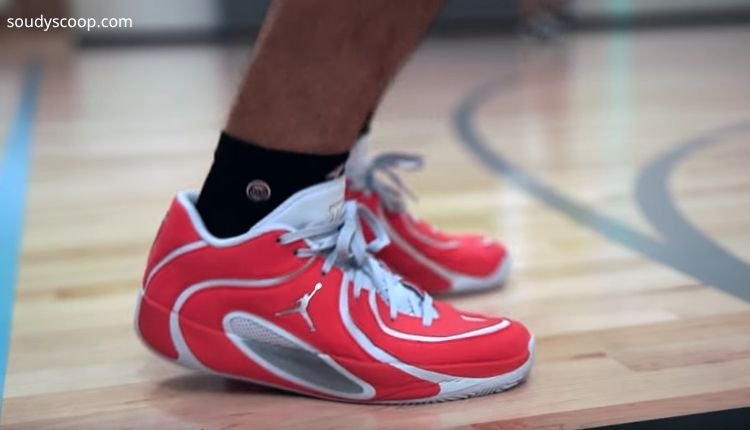
This is where I was most surprised. In hand, the shoe feels flimsy. The heel counter isn’t particularly strong, and the midfoot torsion bar looks minimal. But on court, support held up well. The midsole sidewalls and synthetic shell kept me stable during lateral movements.
For lighter and average-sized players, support should be fine. Bigger or more explosive athletes might want something sturdier, but for me, the shoe performed better than expected in this category.
Verdict: Looks weak, plays solid.
The Aesthetics
Performance is king, but style matters too. Personally, I think the Jordan Tatum 4 is the best-looking model in the line so far. The black and white with red accents I tested had a clean, modern design that looked sharp both on and off the court.
Jordan Tatum 4 Performance Review: Pros and Cons
Pros:
- Excellent traction on indoor courts
- Cushlon 3.0 midsole is soft, springy, and comfortable
- Unlocked Zoom adds responsiveness
- True-to-size fit with solid lockdown
- Surprisingly stable despite flimsy feel
- Sleek, modern design
Cons:
- Very cheap-feeling materials
- Outdoor durability is questionable
- Exposed Zoom unit can wear out fast
- Lacks premium touches expected in a Jordan signature
Final Verdict: Is the Jordan Tatum 4 Worth It?
After playing extensively in the Jordan Tatum 4, I can say it’s a solid performance shoe with some clear trade-offs. Traction and cushioning are outstanding, making it one of the most comfortable and responsive basketball sneakers I’ve tried recently.
The biggest drawback is the materials. They simply don’t match the price tag or the legacy of the Jordan brand. While they function fine for performance, the cheap feel keeps the shoe from reaching elite status.
If you’re primarily an indoor player looking for comfort, cushion, and traction, the Jordan Tatum 4 delivers. But if you expect premium build quality or plan to hoop outdoors often, this might not be the best option.
Overall Rating
- Traction: 9/10
- Cushioning: 9.5/10
- Materials: 5/10
- Fit: 8.5/10
- Support: 8/10
- Aesthetics: 9/10
Final Score: 8.3/10
The Jordan Tatum 4 performance review leaves me with mixed feelings: fantastic playability with disappointing materials. Still, this might be the best Tatum model yet for those who value traction and cushioning above all else.
As a dedicated footwear reviewer, I have spent years analyzing and testing athletic shoes across every category, from high-performance running sneakers to lifestyle-inspired basketball silhouettes. My work goes beyond simple first impressions; each review is built on a foundation of hands-on experience, thorough research, and attention to the details that matter most to athletes and casual wearers alike. I aim to bridge the gap between brands’ marketing claims and real-world performance, giving readers an honest, balanced perspective.
My writing style combines technical evaluation with an accessible tone, so both professionals and everyday enthusiasts can understand the strengths and weaknesses of each shoe. Whether discussing midsole cushioning technology, outsole traction, or upper material breathability, I break down complex features into practical insights. Readers trust my reviews because they know I highlight both the benefits and potential drawbacks, helping them make more confident purchasing decisions.
Over time, my work has evolved into a comprehensive resource for anyone seeking guidance on athletic footwear. I regularly compare new releases with previous models to highlight improvements or missed opportunities, while also exploring how different shoes fit specific activities—such as marathon training, weightlifting, or casual streetwear. By staying updated with industry trends and listening to community feedback, I ensure that my reviews remain relevant, informative, and genuinely useful.
Ultimately, my mission is to provide clarity in a crowded market. With countless options available, choosing the right pair of shoes can feel overwhelming. Through in-depth, unbiased, and engaging reviews, I strive to make that decision easier, equipping readers with the knowledge they need to find footwear that truly matches their performance goals and personal style.
